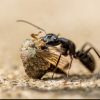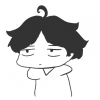I'm an obsessive researcher, but one thing I haven't been able to find is - how do I know when they've had enough protein? I also have a small colony of Camponotus Ligniperda that I just got from someone (1q 6w) and I noticed that they don't go after every single piece of protein like the Lasius do.
The Lasius so far will swarm and drag down into the nest every single insect that I give them. (I have some isopods in the freezer and thaw them before giving to the ants)...the Camponotus seem to be largely ignoring the isopods, but they also only have 2 eggs right now & no larvae.
Should I be making sure they have protein available at all times (like, leaving that isopod in with the Camponotus and replacing every few days)? Is the fact that the Lasius are swarming and dragging into the nest every insect I put in a sign that they need more?
I of course make sure they have a constant supply of fresh water and honeywater in cotton balls.
Thanks everyone!

















